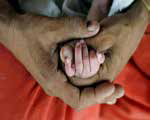
CORPORATE CITIZEN CLAPS FOR THE ALL-WOMEN TEAM AT VADODARA’S COSARA DIAGNOSTICS PVT LTD (CDPL) WHO HAVE SINCE APRIL 2020, MADE OVER 20 LAKH RT-PCR (REVERSE TRANSCRIPTION POLYMERASE CHAIN REACTION) KITS, WIDELY USED TO DETECT COVID-19 INFECTIONS
The six-member team of Kesha Parikh, production officer; Julie Tahilramani, QA officer; Kirti Joshi, officer QC; Dr Jinitha Varghese and Janki Dalwadi, both R&D officers, took the challenge to help out during the current second wave of the pandemic since they felt that they had not contributed enough during the first wave and on the onset of the pandemic last year. The team is led by Dr Swapnali Kulkarni, senior manager, technical services, CDPL. While Janaki and Jinitha function in the R&D department, the other four work in the production department. Besides process-related functions, the team has been assisting government and private labs with technical guidance. What began as producing tests on a per person basis, had to scale up into manufacturing of testing kits. Each kit comprises of 400-500 tests. Given the current rate of the spike of the Covid-19 pandemic cases, the team aims to scale its operations and manufacture 8,00,000 tests per month in the coming days. Such is the dedication of its team members that they have been working past their office timings, and each of them has been dedicating extra hours. They have not been on leave even for a single day since last April. They believe that they have been given the chance of a lifetime to channelise their education and knowledge in tackling the pandemic crisis. “When the pandemic began last year, we were uncertain about how to handle it. But the scare could not pervade our enthusiasm and fortunately, all of us also had full support from our families. We had decided to make as many kits as possible as the demand for test was high,” said Swapnali. Established in 2019, CDPL is owned by the Sarabhai Group and operates as a joint venture with US-based Co-Diagnostics Ltd. It has been a pioneering supplier of RT-PCR to various states including Delhi, Gujarat, Maharashtra, Telangana, and Karnataka.
CORPORATE CITIZEN SLAPS THE DIP IN INDIA’S LIFE EXPECTANCY AS TABLED IN THE MOST RECENT DATA RELEASED IN THE SRS (SAMPLE REGISTRATION SYSTEM) BASED ABRIDGED LIFE TABLES 2014-18


The data unfolds that, India’s life expectancy for a child born on April 7, 2021 (World Health day) is 69.4 years which is less than the world’s average lifespan of 72.81 years. This is based on a report presented up to the age group of 85+ in reflecting the mortality rate as per the projection from SRS (Sample Registration System) based Abridged Life tables (2014-18) of Register General and Census Commissioner, Government of India. The findings communicate fundamental and essential facts about the age distribution of mortality and is a tool for measuring the probability of life and death across age groups. The past 50 years’ data shows an increase of approximately 20 years of life span for every Indian in comparison to 49.7 years as per the SRS report of 1970-75. Also, the state-wise data depicts life expectancy in both Kerala and Delhi at approximately 75.3 years which is six years more than the national average. However, life expectancy is the lowest in Chhattisgarh at approximate 65.2 years, four years less than the national average. The same for rural India is 68 years in comparison to the average of 72.6 years in urban pockets. A trend has been that life expectancy between rural and urban India has been narrowing down and females are projected to live more than males. It is well understood that life expectancy reflects critical yardsticks of health standards and socio-economic living standards of its citizens. Parameters such as toxic air, nutrition, public health services, hygienic condition and climate changes are other strong reasons for the perils of lower life expectancies. If a child born on World Health Day 2021 in India, survives till 2089, it must be ready to adapt to the changing climate and most unfairly, combat these threats to public health said a Union Ministry of Earth Sciences assessment. With India cradling 35 of the world’s most polluted 50 cities and privy to chronic obstructive pulmonary disease, respiratory infections and lung cancers emerging as the top diseases for the last five years, can the government machinery and health infrastructure afford to still look away? The pandemic has definitely exposed a health infrastructure, ticking away like a time bomb.